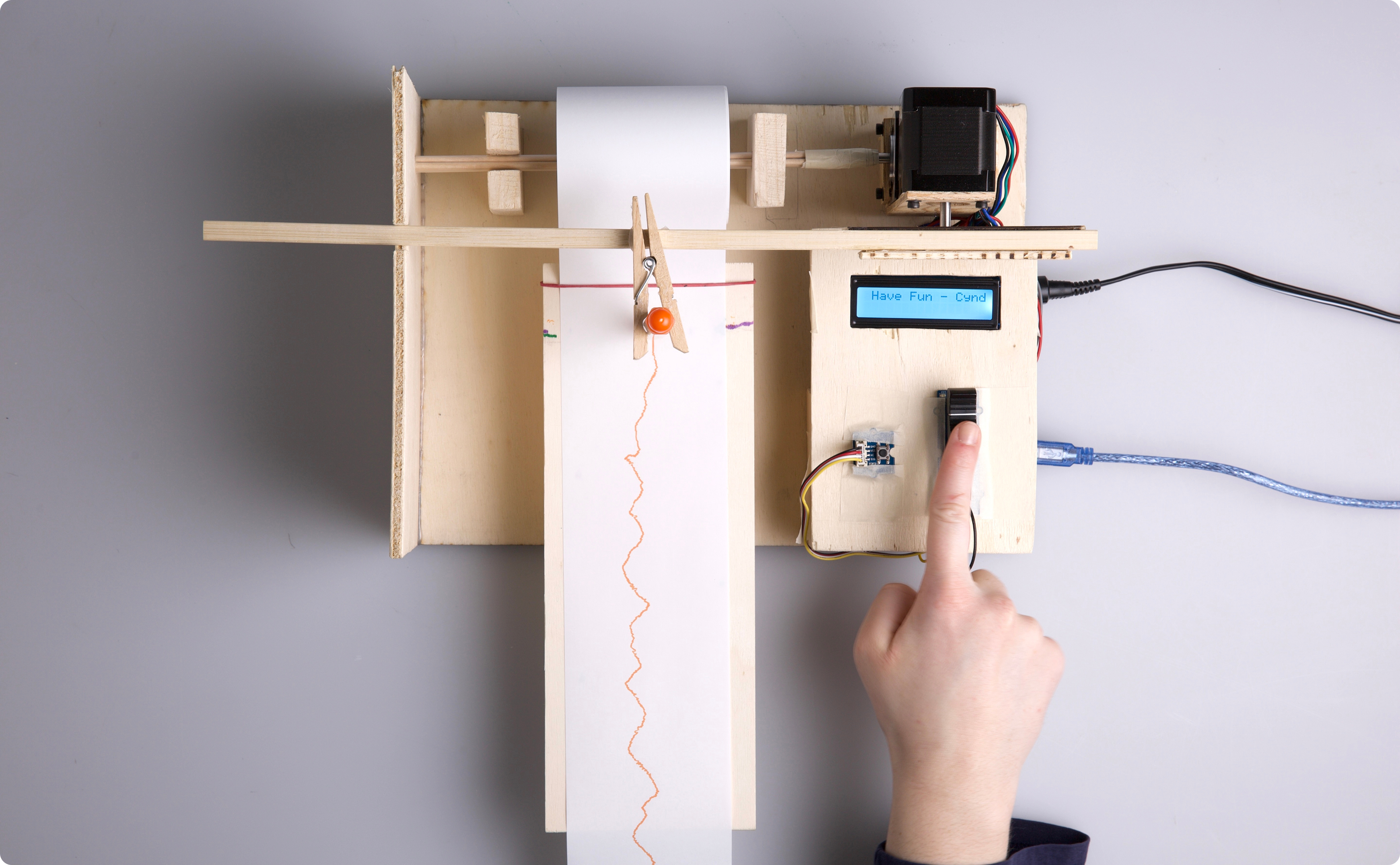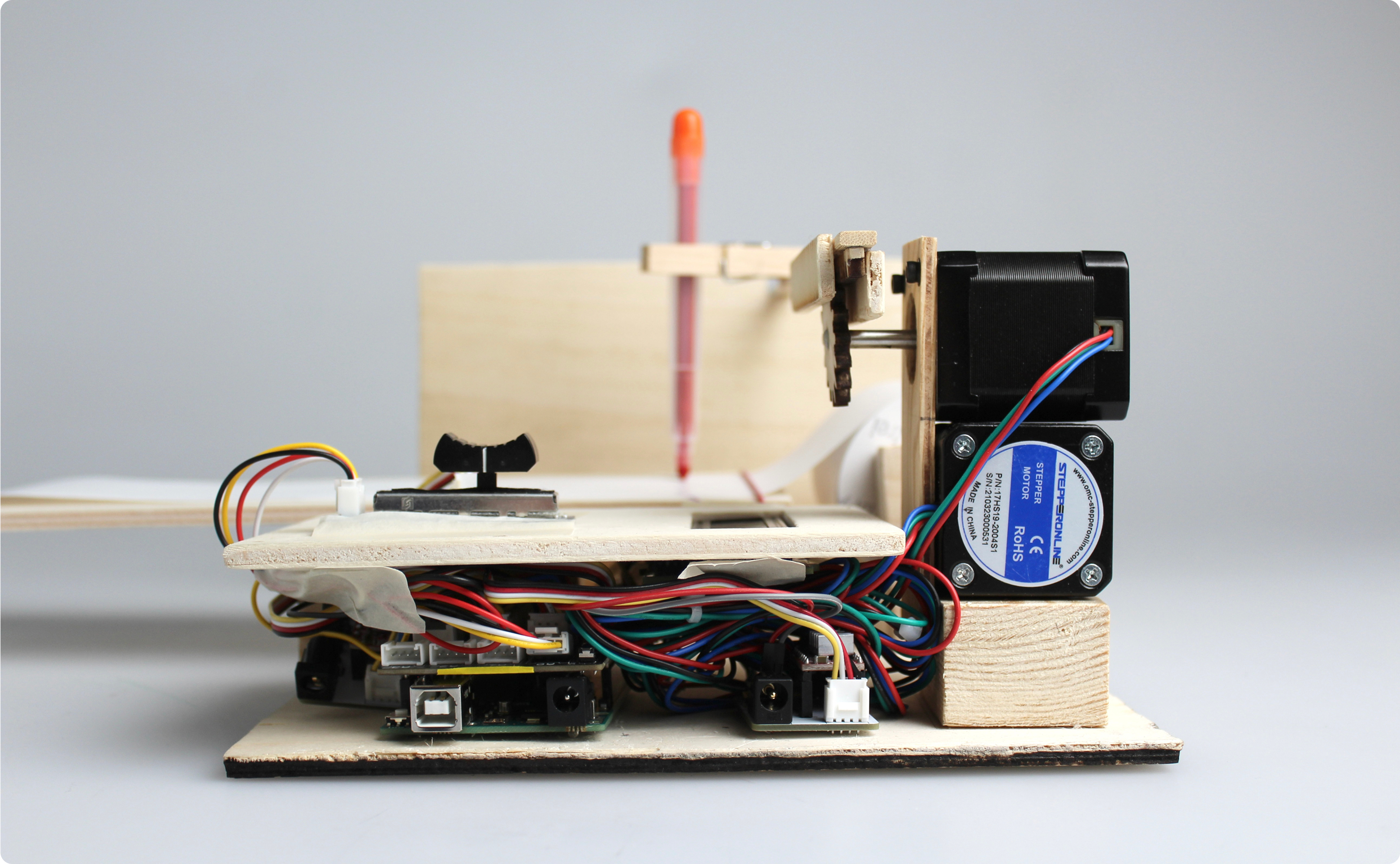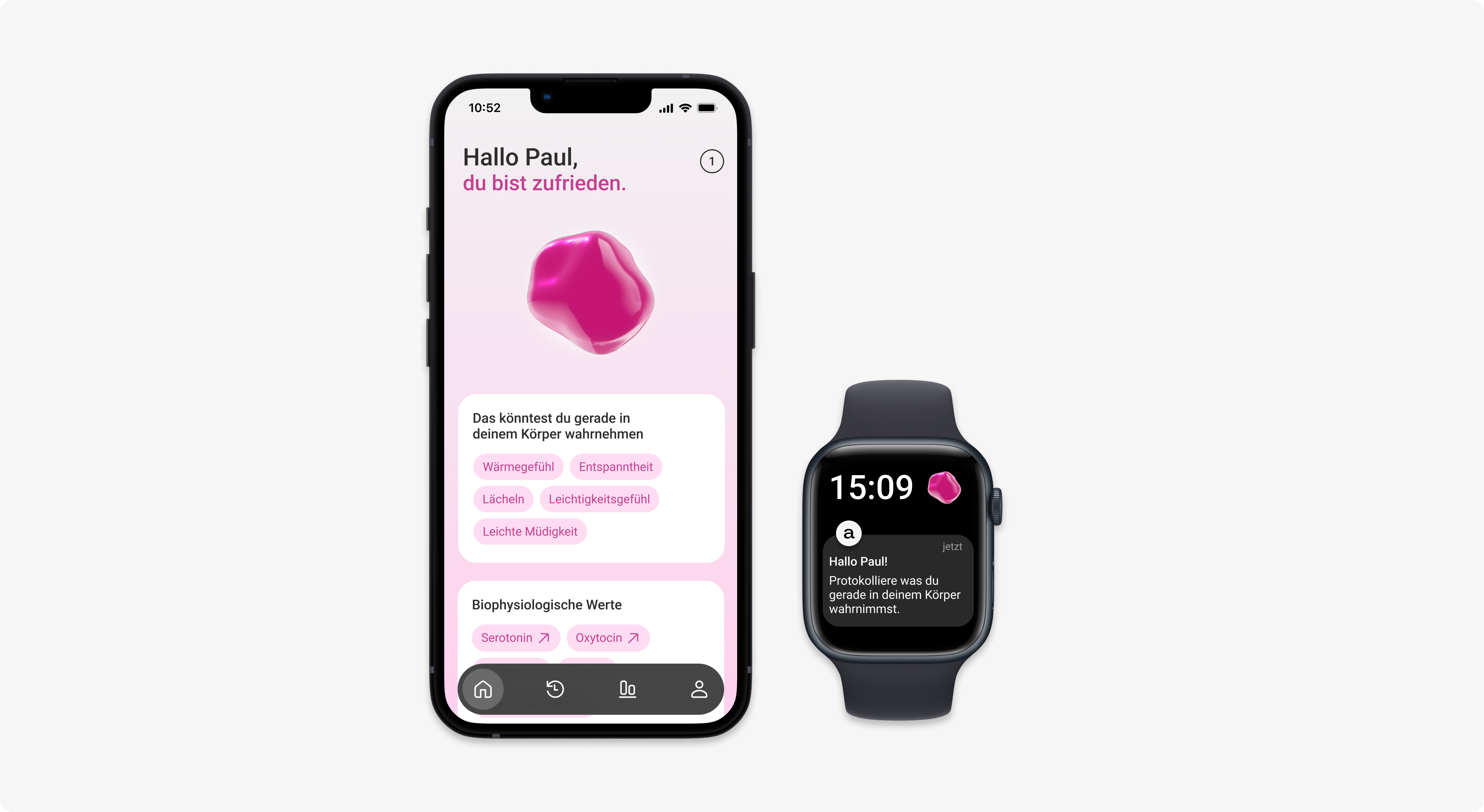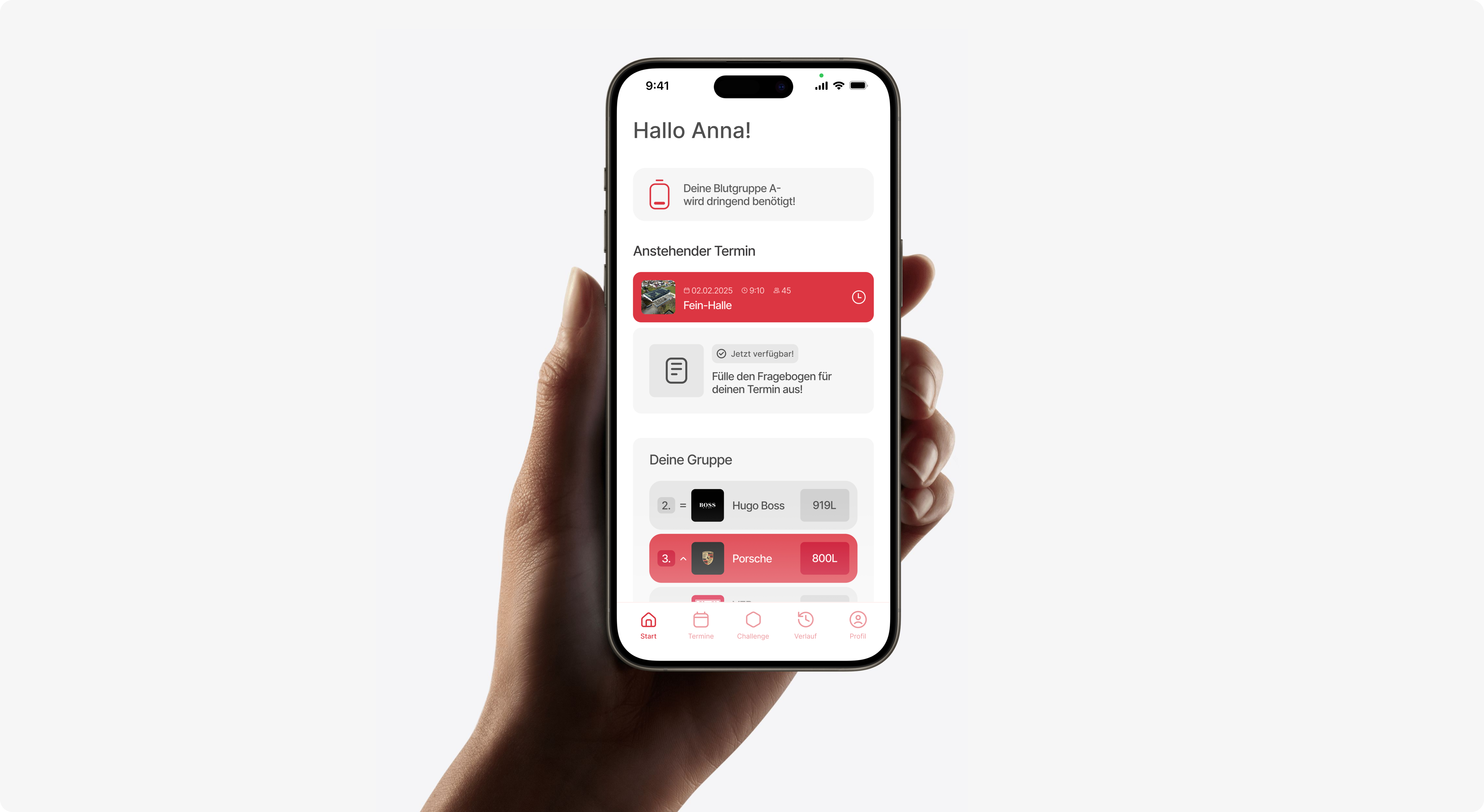Sound Plotter
Rapid prototyping of a mechanical drawing device
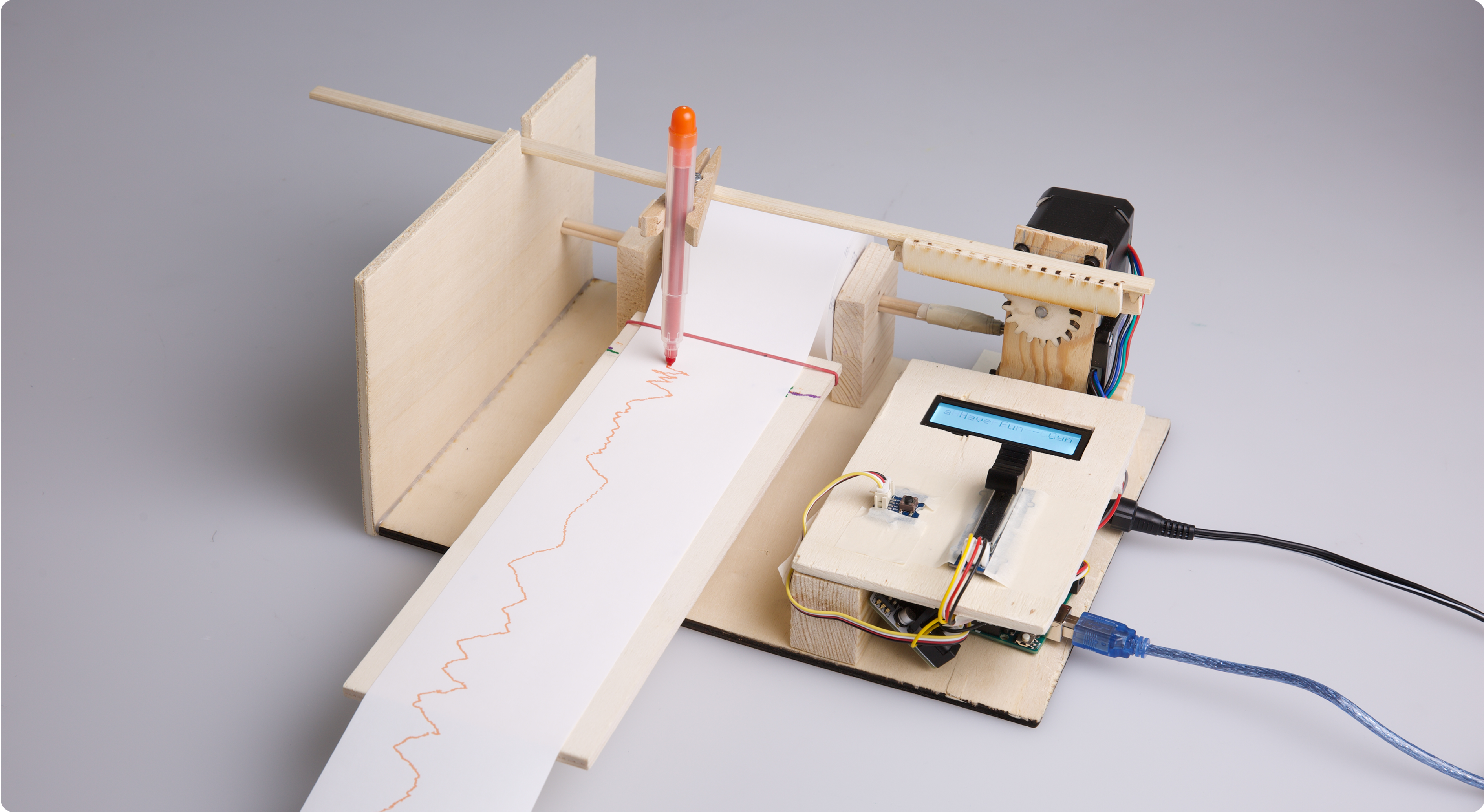
(Team)
Helen Frank
Nele Schaal
(Duration)
5 days
(Topic)
Rapid prototyping
Visualization
Arduino
Processing
In the 5-day mechatronics workshop focused on rapid prototyping, we were tasked with developing a mechanical drawing device capable of creating lines and shapes on surfaces. After a short brainstorming phase, we decided to prototype a device that analyzes the frequencies of a song in real time and visualizes them on paper using a pen, controlled by stepper motors and serial communication between Processing and Arduino.
Components
To build our device, we used an Arduino Uno R3, a Base Shield, a stepper motor driver, two stepper motors, a potentiometer, a button and an LCD display. The housing is made of laser-cut and hand-sawn wooden components that provide structural support and hold all parts in place.
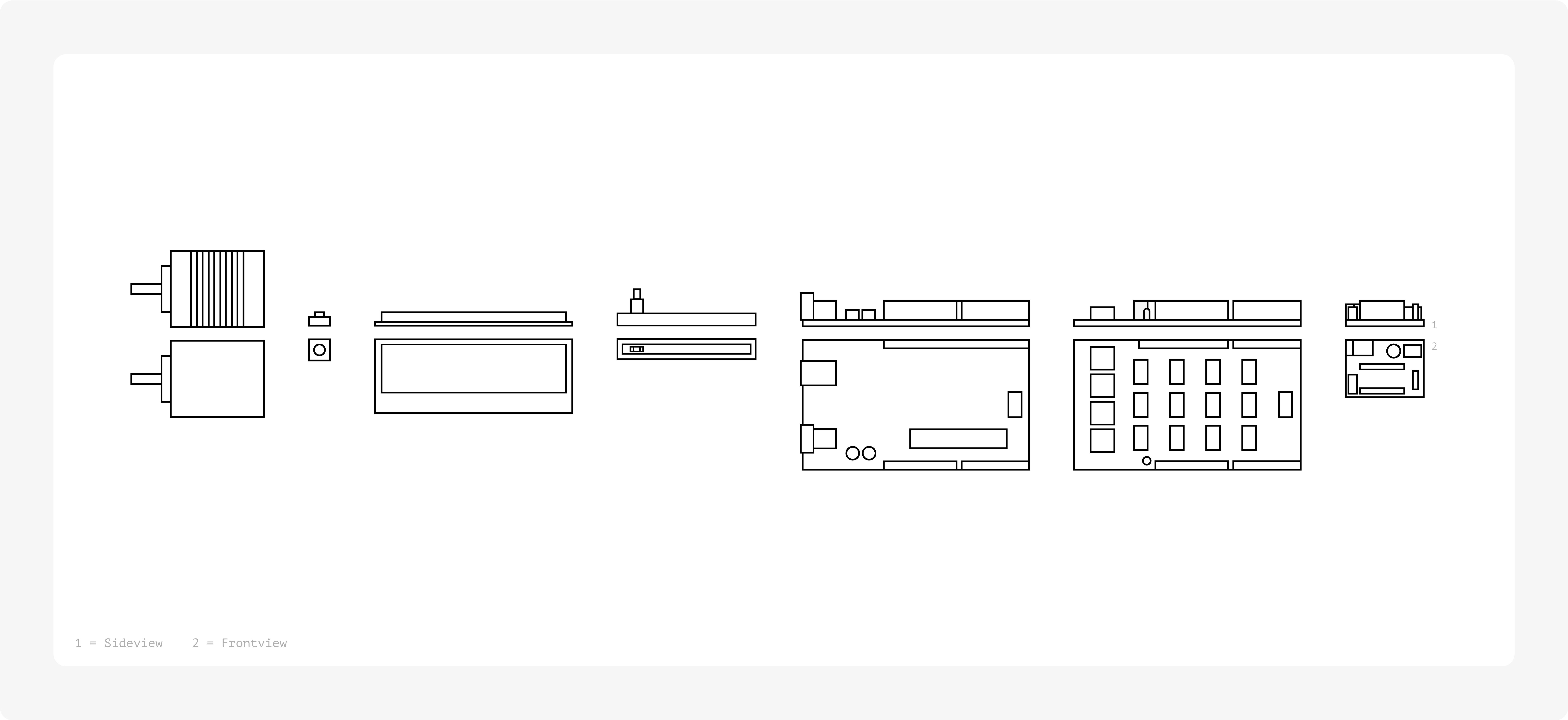
Functionality
An MP3 file is loaded into Processing and played while an FFT (Fast Fourier Transform) analysis is used to break down the music into its frequency spectrum. From this, the most dominant frequency is calculated and sent to the Arduino. At the same time, a potentiometer provides input that the Arduino reads and sends back to Processing, allowing the music's frequency output to be adjusted dynamically in real time.
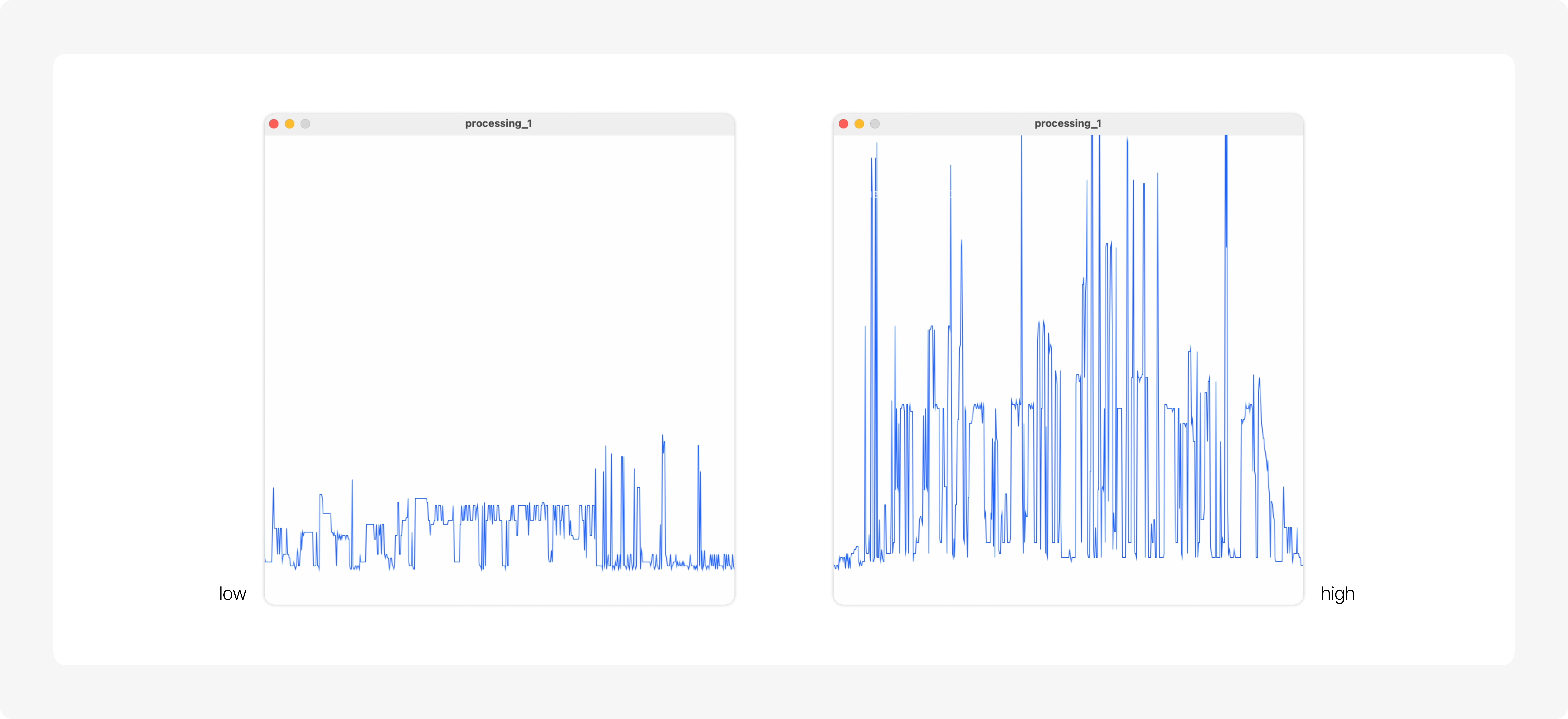
On the Arduino side, the incoming frequency values are translated into precise movements of two stepper motors. One motor controls the vertical motion of a pen, raising and lowering it in response to the frequency data, while the second motor steadily moves the paper forward. Together, they produce a continuous line drawing that visually represents the sound.
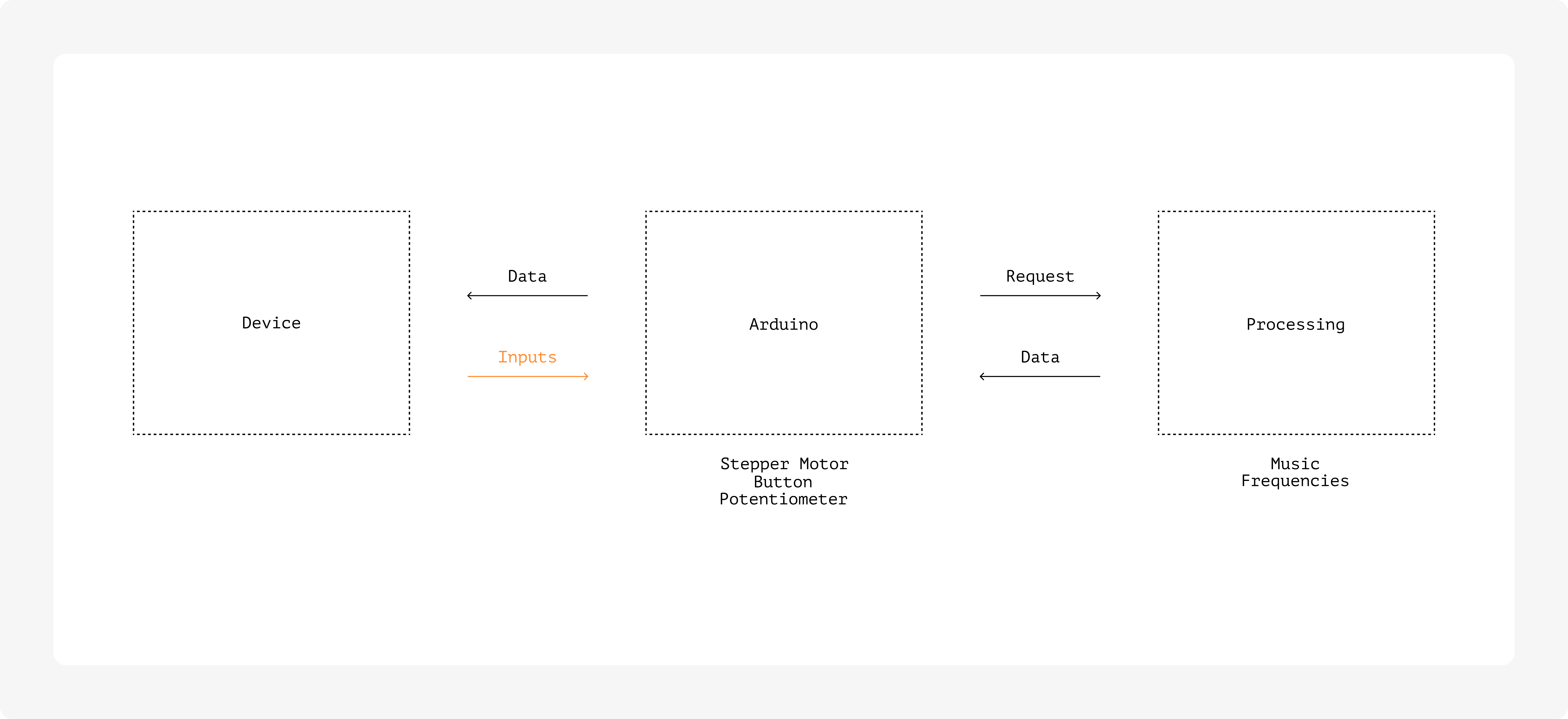
An LCD display shows the current song title as scrolling text, we chose Girls Just Want to Have Fun by Cyndi Lauper, and a button allows users to start or stop the motorized drawing process, giving control over playback and plotting.
The potentiometer doesn't just adjust the musical frequency but also acts as an interactive control element within the system. By turning the potentiometer, users can change the pitch of the song, which directly affects the frequency analysis and, in turn, the drawing. Since the music is played loudly, users can not only see but also hear the changes they make. This creates a synchronized, real-time interaction between sound, motion, and image.
